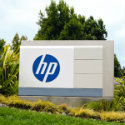HP Launches NFV-in-a-Box
NFV software on a standard server, configured for service providers and ready to go.

Hewlett-Packard this week announced a turnkey NFV solution offering server, software and optional services for service providers looking to reduce the hassle of NFV.
The HP NFV System is "an all-in-one turnkey solution to help service providers turn up their NFV capability by integrating compute nodes, storage and control plane for a virtual infrastructure manager, all in a single orderable product," says Sarwar Raza, VP product management for HP Inc. (NYSE: HPQ) NFV. "It shows up, it's pre-integrated, and you're ready to put your applications on it."
Service providers can also purchase add-ons for additional storage, compute and networking capabilities.
"It's completely automated, installed and preconfigured. Just switch it on and start running your workloads," Raza says.
The server is built on Helion OpenStack Carrier Grade, HP's carrier-grade OpenStack built-in partnership with Wind River Systems Inc.
HP also upgraded its MANO software, NFV Director, to Version 3.0, adding analytics powered by HP big data. "What this allows is the ability for service providers to harvest data and make real-time decisions" for traffic steering, network optimization, and other network management, using predictive analytics to identify causes of failure and congestion on the network.
NFV Director is an optional component of the NFV System, and can be purchased separately.
And HP is offering services through its Technology Services business unit to help service providers get up and running on NFV.
But isn't NFV all about aggregating -- getting away from vertically integrated solutions combining hardware and software from a single vendor? And isn't a product like NFV System a violation of that ethos, by integrating hardware and software?
Yes it is and no it doesn't, says Raza.
While NFV System is an integrated solution from a single vendor, it preserves disaggregation by giving customers freedom of choice. Customers can run other software, from other vendors or open source, on the HP hardware. Likewise they can use other hardware to run the HP software. It's still disaggregated.
"These are all standards-based products," Raza says. They're x86 servers using standard APIs and open source software. "What we're doing is providing integration capabilities," he says.
"It's a bundling and packaging of standard components," Raza says.
Want to know more about NFV? This will be just one of the many topics covered at Light Reading's second Big Telecom Event on June 9-10 in Chicago. Get yourself registered today or get left behind!
HP isn't the only company to pair NFV software with a server hardware in a packaged solution. Overture Networks Inc. introduced the 65 Virtual Service Edge (65vSE) at Light Reading's Big Telecom event in June 2014. The combination of NFV software and server hardware seems counter-intuitive at first -- NFV is all about hardware-independent software. But hardware independence doesn't mean eliminating hardware -- software still needs hardware to run. Both HP and Overture make the same pitch: Conventional CPE requires separate truck rolls to install and modify, whereas NFV on a standard server needs to be installed just once, and after that it can be reconfigured and updated remotely through software.
HP announced a partnership with Nokia Networks in November to develop an open source-based cloud solution for service providers migrating to NFV. (See Nokia, HP Stack Their Cloud NFV Bets.)
And Telefónica SA (NYSE: TEF) turned to HP for NFV services for the carrier's Unica infrastructure, according to a March announcement. (See Telefónica Taps HP for Unica NFV.)
— Mitch Wagner, 


 , West Coast Bureau Chief, Light Reading. Got a tip about SDN or NFV? Send it to [email protected].
, West Coast Bureau Chief, Light Reading. Got a tip about SDN or NFV? Send it to [email protected].
About the Author(s)
You May Also Like




_International_Software_Products.jpeg?width=300&auto=webp&quality=80&disable=upscale)







